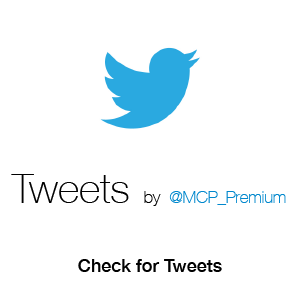Key events this week – S&P prelim PMIs for April, US Durable Goods Orders, Fed Beige Book
Recap from last week: Tariff Uncertainty Weighs on Central Bankers.
Uncertainty surrounding US tariffs looms large over global monetary policy. Speeches last week showed central bankers shifting into a somewhat reactive balancing act of monitoring data while bracing for a potential tariff-induced shock. To be fair, the ECB and BoC have now built a cushion of rate cuts. However, this environment of significant ambiguity regarding the trajectory of trade appears to be solidifying a more hesitant and data-dependent stance, particularly as central bankers remain protective of their price stability mandates in the face of the higher-than-expected tariff risks.
The ECB cut rates as expected, noting that the disinflation process remains on track and that the euro area economy has been “building up some resilience against global shocks”. While inflation has eased, the outlook is clouded by “exceptional uncertainty”. The assessment of the policy stance relative to the theoretical neutral rate was suspended, and the ECB President colorfully stated;
Our view – my view certainly – is that the neutral rate, apart from the measurement issues associated with it, is a concept that works for a shock-free world. That’s how it is described. And anybody in this room who thinks that we are in a shock-free world would, I suggest, maybe raise their hand or have their head examined. Source: ECB President Lagarde, Press Conference Q&A, 17 Apr 2025
The ECB President emphasized the importance of readiness (attentive to new developments) and agility (not rushing to a particular stance) in determining the policy stance in the short term – “and that will require a cohesive approach that will be based more than ever on the analysis of data”.
The BoC kept its policy rate unchanged after seven consecutive rate cuts as it shifted into a wait-and-see mode to assess the impacts of tariffs on inflation and the economy. The BoC did warn that while growth was starting to show signs of slowing, inflation outcomes were uncertain. The latest CPI report showed underlying inflation remained firm in Mar. Guidance remained suspended until the situation is clearer;
Faced with pervasive uncertainty, Governing Council will proceed carefully, with particular attention to the risks. That means being less forward-looking than usual until the situation is clearer. It also means we are prepared to act decisively if incoming information points clearly in one direction. Source: BoC Statement, 16 Apr 2025
In his speech last week, US Fed Chair Powell maintained that the US economy is “in a solid position” with a strong labor market. He did acknowledge that the tariffs announced to date were ”significantly larger” than anticipated and that the same is likely to be true of the economic effects. His focus on anchored inflation expectations and the risks of persistent price pressures from tariffs suggested a reluctance to ease policy soon. Overall, Powell’s speech leaned hawkish in its cautious tone and focus on inflation risks over immediate rate cuts. He stopped short of committing to tighter policy, rather, keeping options open based on incoming data.
This was in contrast to Fed Governor Waller’s speech – where both paths seemed to lead to rate cuts. He concluded that the future path of tariffs will drastically alter the economic outlook and the necessary monetary policy response. He offered two broad scenarios. Large, persistent tariffs pose a significant risk of economic slowdown and rising unemployment, potentially warranting aggressive rate cuts despite a temporary inflation spike. Smaller, diminishing tariffs would have a less severe impact, allowing for a more measured policy response. This opens the possibility of rate cuts in the latter half of the year driven by improving underlying inflation or allowing for “good news” rate cuts. The next FOMC meeting is on 6-7 May.
US economic data followed a similar theme last week, reflecting a divergence between soft and hard data. US retail sales rebounded strongly as expected, due mostly to growth in motor vehicle sales, though retail sales increased across most categories. There is uncertainty over the durability of the improvement if growth is due to a pull forward of consumption before tariffs are in effect. Housing permits increased by more than expected, however housing starts (feeds into GDP) were lower than expected. Overall industrial production declined (due to the output of utilities), but manufacturing output growth was positive for Mar, though slowed from Feb. The first two regional manufacturing surveys for Apr (soft data), reflected a further weakening in activity and sentiment. The surveys captured the initial response to the Liberation Day tariff announcement, as well as the announcement of the pause on reciprocal tariffs.
Overall, the Atlanta Fed GDP Nowcast for Q1 growth “improved” slightly last week, but remained low at -2.2% (as of 17 Apr), with the gold-adjusted forecast for Q1 growth at -0.1%.
Outlook for the week ahead; S&P prelim PMIs for April, US Durable Goods Orders, Fed Beige Book.
The data flow will be somewhat lighter this week with a focus on both hard and soft data. The news flow around tariffs and potential “trade deals” will continue to pose headline risks. The 2025 World Bank/IMF meetings will take place this week.
Key factors to watch this week;
S&P preliminary PMIs for Apr – US, Eurozone, France, Germany, Japan, and Australia
- The April preliminary PMI reports will be an important read on business activity and sentiment reaction since the US Liberation Day tariff announcement.
US data – we continue to monitor the divergence between soft and hard data. Data flow this week will be light with a few highlights. Q1 earnings reports will remain in focus.
- US Durable Goods Orders for Mar are expected to increase by +1.5% in Mar, up from +1% in Feb.
- The US Fed Beige Book for the last six weeks will be released this week – providing some important anecdotes from regional Fed contacts on activity, prices, and the labor market.
- New home sales are expected to be little changed at 0.68m (annualized) in Mar, up from 0.676m in Feb. Existing home sales are expected to slow to 4.14m in Mar, from 4.26m in Feb.
- US Q1 earnings reports will remain in focus this week; particularly regarding guidance and mentions of tariff/trade effects.
There are several Fed speeches this week including Vice Chair Jefferson and Governor Waller (though this is noted as “opening remarks”). It will be the final week of Fed speeches ahead of the black-out period next week, leading up to the next FOMC meeting on 6-7 May.
This week, the US Treasury will auction and/or settle approx. $434bn in ST Bills, with a net paydown of $61bn. The US Treasury will also auction the 2-year, 5-year, and 7-year Notes and the 2-year FRN this week. They will settle at the end of the month, together with the 20-year Bond and 5-year TIPS.
QT this week: Approx $10bn of ST Bills will mature on the Fed balance sheet and will be reinvested.
More detail (including a calendar of key data releases) is provided in the briefing document – download the pdf below:
Comments and feedback are welcome. Please email me at kim.mofardin@marscapitalpartners.net

